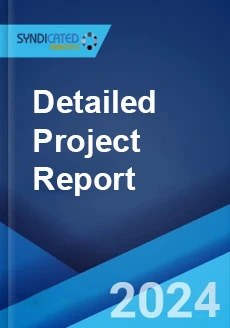
Algorithmic Trading Market: Global Industry Analysis, Market Size, Share, Trends, Application Analysis, Growth and Forecast, 2022-2027
“Global Algorithmic Trading Market: Global Industry Analysis, Market Size, Share, Trends, Application Analysis, Growth and Forecast, 2022-2027” provides a deep and thorough evaluation of the global algorithmic trading market. Algorithmic trading refers to computer codes and charts analysis that facilitates trading. Also known as automated, black-box, and algo-trading, it enables traders to set parameters based on timing, price movement, and quantity. This further allows the system to automatically execute the trade when the pre-programmed instructions correspond with the required market conditions.
The global market is primarily driven by continual technological advancements in algorithmic trading processes. For instance, the rising deployment of cloud computing and application programming interface (API) results in optimizing data management strategies, thereby creating a positive outlook for the market. Along with this, the increasing integration of artificial intelligence (AI) with algorithmic trading also assists the traders to profit from the stocks that have rapid inflow and outflow movements. This, in turn, is further providing a boost to the market growth.
Beginning with a global overview, the report explores the dynamics that have a strong influence on the algorithmic trading market and can also impact its future growth. Taking 2021 as the base year, the report covers the historical market scenarios from 2016-2021 and provides forecasts till 2027. This includes the study of value and volume trends and pricing history. Growth-inducing factors, market restraints, and recent developments have also been analyzed in the report in order to provide deeper knowledge about the industry. On a regional basis, the report examines the algorithmic trading market in North America, Europe, Asia-Pacific, Latin America, and Middle East & Africa. For each of these regions, the report studies the algorithmic trading market in detail for the latest trends, outlooks, and opportunities.
The report analyses the competitive structure of the algorithmic trading industry and provides the profiles of major players operating in the market. The price margins for the products along with the various success and risk factors for manufacturers have also been covered in the report. Moreover, in order to determine market attractiveness, the report analyses the algorithmic trading industry along with the parameters of Porter’s Five Forces model. This model examines the degree of competition in the algorithmic trading industry by analyzing the threat posed by new entrants and substitutes, and the bargaining power of suppliers and buyers. SWOT analysis of the market has also been presented in the report which highlights the strengths, weaknesses, opportunities, and threats pertaining to the algorithmic trading industry. Furthermore, the value chain analysis of the algorithmic trading industry has also been covered in the report. This comprises all the activities in the value chain, such as the procurement of various raw materials, manufacturing, sales, and distribution.
Key Segments and Highlights of the Global Algorithmic Trading Market
- Historical and current scenario
- Trends and developments
- Impact of COVID-19
- Market forecast
- Price analysis and forecast
- Porter’s five forces analysis
- SWOT analysis
- Value chain analysis
- Market Breakup by Type
- Market Breakup by End-Use
- Market Breakup by Region
- North America
- Europe
- Asia-Pacific
- Latin America
- Middle East & Africa
- Key players
The report is a result of exhaustive primary and secondary research undertaken by analysts having years of experience in the algorithmic trading industry. All the qualitative and quantitative aspects of the industry have been covered and the collected data has been analyzed and presented in the form of easily comprehensible charts, graphs, and tables.
Purchase Options
Ask For Customization
Personalize this research
Triangulate with your own data
Get data as per your format and definition
Gain a deeper dive on a specific application, geography, customer or competitor
Any level of personalization
Get in Touch
Call us on
US: +1-213-316-7435
Uk: +44-20-8040-3201
Drop us an email at
sales@syndicatedanalytics.com